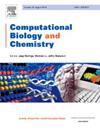通过分子对接、MM-GBSA 和分子动力学模拟研究对人类 UCP1 激活剂的计算研究。
IF 2.6
4区 生物学
Q2 BIOLOGY
引用次数: 0
摘要
肥胖症的发病率在全球范围内迅速上升。棕色脂肪组织激活解偶联蛋白 1(UCP1),通过绕过 ATP 合成产生热量,为肥胖症治疗提供了潜在靶点。通过小分子靶向激活 UCP1 以诱导产热,是一种很有前景的肥胖症治疗方法。在这项研究中,以 2,4-二硝基苯酚(DNP)为参考配体(PDB ID:8J1N,对接得分:-5.343 kcal/mol),对 UCP1 激活剂进行了分子对接,发现了七个得分最高的化合物:柚皮苷(-7.284 kcal/mol)、槲皮素(-6.661 kcal/mol)、莎草酸(-6.017 kcal/mol)、瑞香素(-5.798 kcal/mol)、米拉贝琼(-5.535 kcal/mol)、姜黄素(-5.479 kcal/mol)和福莫特罗(-5.451 kcal/mol)。对接研究中得分最高的分子(即柚皮苷)的主要 MM-GBSA 计算显示,ΔGBind 为 -70.48 kcal/mol。观察到了这 7 种顶级激活剂与 UCP1 结合袋残基 Trp280、Arg276、Glu190、Arg83 和 Arg91 之间的关键相互作用。100 ns 的分子动力学模拟证实了复合物的稳定性,RMSD 值低于 6 Å。此外,大多数激活剂显示出良好的肠道吸收性(>90%)和亲脂性(LogP 2-4),其 pKa 值支持它们作为 UCP1 靶向肥胖症治疗药物的药理潜力。这些发现为通过整合对接得分、相互作用特征、MD 模拟统计特征和理化评估来设计有效的 UCP1 激活剂,从而开发有效的抗肥胖疗法奠定了基础。本文章由计算机程序翻译,如有差异,请以英文原文为准。
Computational insights into human UCP1 activators through molecular docking, MM-GBSA, and molecular dynamics simulation studies
The prevalence of obesity is rapidly increasing worldwide. Brown adipose tissue activates uncoupling protein 1 (UCP1) to generate heat through bypassing ATP synthesis, offering a potential target for obesity treatment. Targeting UCP1 activation to induce thermogenesis through small molecules presents a promising approach for obesity management. In this study, molecular docking of UCP1 activators, using 2,4-dinitrophenol (DNP) as a reference ligand (PDB ID: 8J1N, docking score: −5.343 kcal/mol), identified seven top-scoring compounds: naringin (-7.284 kcal/mol), quercetin (-6.661 kcal/mol), salsalate (-6.017 kcal/mol), rhein (-5.798 kcal/mol), mirabegron (-5.535 kcal/mol), curcumin (-5.479 kcal/mol), and formoterol (-5.451 kcal/mol). Prime MM-GBSA calculation of the top-scored molecule (i.e., naringin) in the docking study showed ΔGBind of −70.48 kcal/mol. Key interactions of these top 7 activators with UCP1 binding pocket residues Trp280, Arg276, Glu190, Arg83, and Arg91 were observed. Molecular dynamics simulations performed for 100 ns confirmed complex stability, with RMSD values below 6 Å. Additionally, most activators showed favorable intestinal absorption (>90 %) and lipophilicity (LogP 2–4), with pKa values supporting their pharmacological potential as UCP1-targeting therapeutics for obesity. These findings provide a foundation for designing potent UCP1 activators by integrating docking scores, interaction profiles, statistical profiles from MD simulations, and physicochemical assessments to develop effective anti-obesity therapies.
求助全文
通过发布文献求助,成功后即可免费获取论文全文。
去求助
来源期刊

Computational Biology and Chemistry
生物-计算机:跨学科应用
CiteScore
6.10
自引率
3.20%
发文量
142
审稿时长
24 days
期刊介绍:
Computational Biology and Chemistry publishes original research papers and review articles in all areas of computational life sciences. High quality research contributions with a major computational component in the areas of nucleic acid and protein sequence research, molecular evolution, molecular genetics (functional genomics and proteomics), theory and practice of either biology-specific or chemical-biology-specific modeling, and structural biology of nucleic acids and proteins are particularly welcome. Exceptionally high quality research work in bioinformatics, systems biology, ecology, computational pharmacology, metabolism, biomedical engineering, epidemiology, and statistical genetics will also be considered.
Given their inherent uncertainty, protein modeling and molecular docking studies should be thoroughly validated. In the absence of experimental results for validation, the use of molecular dynamics simulations along with detailed free energy calculations, for example, should be used as complementary techniques to support the major conclusions. Submissions of premature modeling exercises without additional biological insights will not be considered.
Review articles will generally be commissioned by the editors and should not be submitted to the journal without explicit invitation. However prospective authors are welcome to send a brief (one to three pages) synopsis, which will be evaluated by the editors.
 求助内容:
求助内容: 应助结果提醒方式:
应助结果提醒方式:


